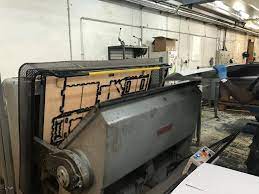Revolutionizing Material Processing: The Critical Role of Die-Cutting Machinery
In the competitive manufacturing industry, precision and efficiency are key to staying ahead. Die-cutting machinery, a vital tool in modern production lines, plays an essential role in shaping materials with precision and speed. This article explores the technological advancements, benefits, and significant impact of die-cutting machinery on various industries, including packaging, automotive, and textiles.
Introduction to Die-Cutting Machinery
Die-cutting machinery is specialized equipment designed to cut, shape, or form materials using a die—a custom-designed tool that stamps out specific shapes from a variety of materials such as paper, fabric, rubber, or metal. This process is crucial for creating high-precision parts and components that require exact dimensions and intricate designs.
Key Features of Modern Die-Cutting Machines
Modern die-cutting machines boast several advanced features that enhance their utility in manufacturing:
- High Precision Cutting: These machines provide extremely accurate cuts, crucial for components that must fit together perfectly in complex assemblies.
- Versatility: They can handle a wide range of materials and thicknesses, making them suitable for multiple industries from packaging to electronics.
- High-Speed Operation: Many die-cutting machines are designed for rapid production, allowing manufacturers to increase throughput and reduce turnaround times.
- Automation and Control: Advanced die-cutting machines often come equipped with computer-controlled systems, enabling precise adjustments and minimal waste.
Benefits of Using Die-Cutting Machinery
Implementing die-cutting machinery in manufacturing processes offers numerous advantages:
- Enhanced Productivity: Automation allows for continuous operation, significantly increasing production rates.
- Improved Quality Assurance: Consistent, precise cuts ensure high-quality results with reduced material waste and lower rates of defective products.
- Cost Efficiency: Although the initial investment may be significant, the long-term savings in material costs, labor, and reduced waste contribute to overall cost efficiency.
- Customization Capabilities: Die-cutting machinery is adaptable to changing design requirements, supporting custom orders and small production runs without extensive downtime.
The Impact on the Manufacturing Industry
Die-cutting machinery has transformed manufacturing processes by enabling the mass production of detailed, precision-cut components. This technology is particularly impactful in industries such as automotive manufacturing, where parts must meet strict specifications, and in packaging, where custom shapes and designs can significantly enhance product appeal.
Future Trends in Die-Cutting Technology
The future of die-cutting machinery looks toward greater integration with digital technologies. Innovations such as IoT connectivity for enhanced monitoring and maintenance, machine learning algorithms for optimizing cutting patterns, and further automation are expected to drive efficiency and precision. Additionally, the ongoing development of more sustainable practices, including the use of eco-friendly materials and energy-saving technologies, will continue to shape the evolution of die-cutting machinery.
Conclusion
Die-cutting machinery is a cornerstone of modern manufacturing, providing the precision, efficiency, and versatility necessary to produce high-quality products in a cost-effective manner. As manufacturing demands continue to evolve, the role of die-cutting machinery will only grow, driving innovations and improvements across multiple sectors. Investing in the latest die-cutting technology is not just a matter of improving production capabilities—it’s about shaping the future of manufacturing.



